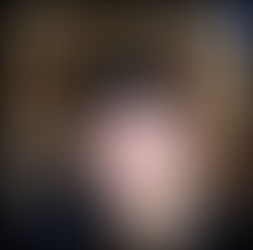Have a HOOT of a TIME! Max. 5 photographers in the Group!
- Jennifer Hemmings / David Hemmings

- Mar 16
- 3 min read
Great Grey Owl Workshop Feb 01- 06 2026 / Ultimate Grey Owls, Snowy Owls Feb 01-08 2026

Winter presents a fantastic opportunity for nature photographers and wildlife fans. Among the most beautiful subjects to capture during this season is the remarkable Great Grey Owl. Known for its stunning looks and elusive nature, this majestic bird can inspire photographers from all walks of life. In this post, we will explore the art of photographing these incredible owls in their winter habitat, offering practical tips, deep insights, and motivation for both novice and skilled photographers alike.
Understanding the Great Grey Owl
The Great Grey Owl (Strix nebulosa) is among the largest owls globally, boasting an impressive wingspan of up to 5 feet and a distinct facial structure that helps it hunt. These birds inhabit northern Canadian boreal forests, relying heavily on their exceptional hearing to locate prey, often hidden beneath thick layers of snow. This snowy environment provides a stunning backdrop, accentuating their striking yellow eyes and intricate feather patterns.
When photographing a Great Grey Owl, the contrast of its features against a snow-covered landscape creates dynamic and compelling images. For example, a well-composed shot can reveal the textures of the owl's plumage, which can have over 1,000 individual feathers, allowing photographers to explore different perspectives and capture stunning images.
Choosing the Right Equipment
Having the right gear is essential for effective photography of Great Grey Owls. Here are a few key items:
Camera: A digital single-lens reflex (DSLR) or mirrorless camera is ideal for wildlife photography, offering flexibility and high-quality images. Cameras like the Canon EOS R5 or Nikon Z6 II can produce superb results even in challenging light conditions.
Lenses: A long telephoto lens, preferably between 300mm and 600mm, allows you to capture detailed images without disturbing the owls. Lenses with a wide aperture of f/2.8 or f/4 perform well in low-light situations, which are common during winter months.
Tripod: A sturdy tripod is essential for stability, especially in the frigid winter air where your hands may become unsteady.
Weather Protection: Your camera gear must be shielded against the elements. Using a rain cover or opting for weather-sealed equipment can preserve your gear from cold, snow, and moisture.
Timing and Light Conditions
With Hemmings Photo Tours offering this owl workshop in Calgary, Canada during winter, there are days with soft, golden light which can dramatically enhance your images.
Overcast days and snowy days also present unique benefits. The diffused light reduces sharp shadows and bright highlights, creating a more even exposure. For these conditions, you may need to adjust your camera settings. Increased ISO settings (around 800 to 1600) and wider apertures (around f/4 or lower) can help compensate for the lower light.
Composing Your Shots
When capturing Great Grey Owls, pay attention to both the background and foreground elements. Snow-covered trees, frost-covered branches, or gently falling snow can elevate your composition significantly.
Consider applying the rule of thirds, positioning the owl off-center for a more engaging image. Try different angles: photographing from a lower point can emphasize the owl's stature, while a higher angle may provide an intimate perspective. Incorporating elements of the winter landscape can add depth; for example, a snowy log or a distant tree line can create context for your images.
Focusing on Details
While wide shots can be breathtaking, close-ups of the owl's features offer powerful visual narratives. Capturing the intricacies of their feathers or the intense gaze of their eyes can evoke emotion in your viewers.
Employing bokeh effects—achieved by using a wide aperture—can allow the owl to stand out sharply against a soft background. For instance, a close-up where the background is blurred can isolate the owl, drawing all attention to its grace and beauty.
Join us and have a HOOT of a Time! info@hemmingsphototours.com or call Dave 1.416-899-2496
Photographing Great Grey Owls in winter is a deeply rewarding experience. As you go on this adventure, appreciate the beauty of the winter wilderness, the elegance of these majestic birds, and the peace found in observing wildlife in its natural setting.
With patience, the right gear, and a strong respect for nature, you can create breathtaking images that tell the story of the Great Grey Owl amidst the snow. Every outing into the winter landscape presents a unique chance for creativity and growth, whether you are just starting or have years of experience behind the camera.
With this knowledge, it's time to gather your gear, embrace the chill, and explore the enchanting world of these extraordinary owls. Happy shooting! Hemmings Photo Tours -- Over 16 years of Owls Photo Workshop Experience!











































Comments